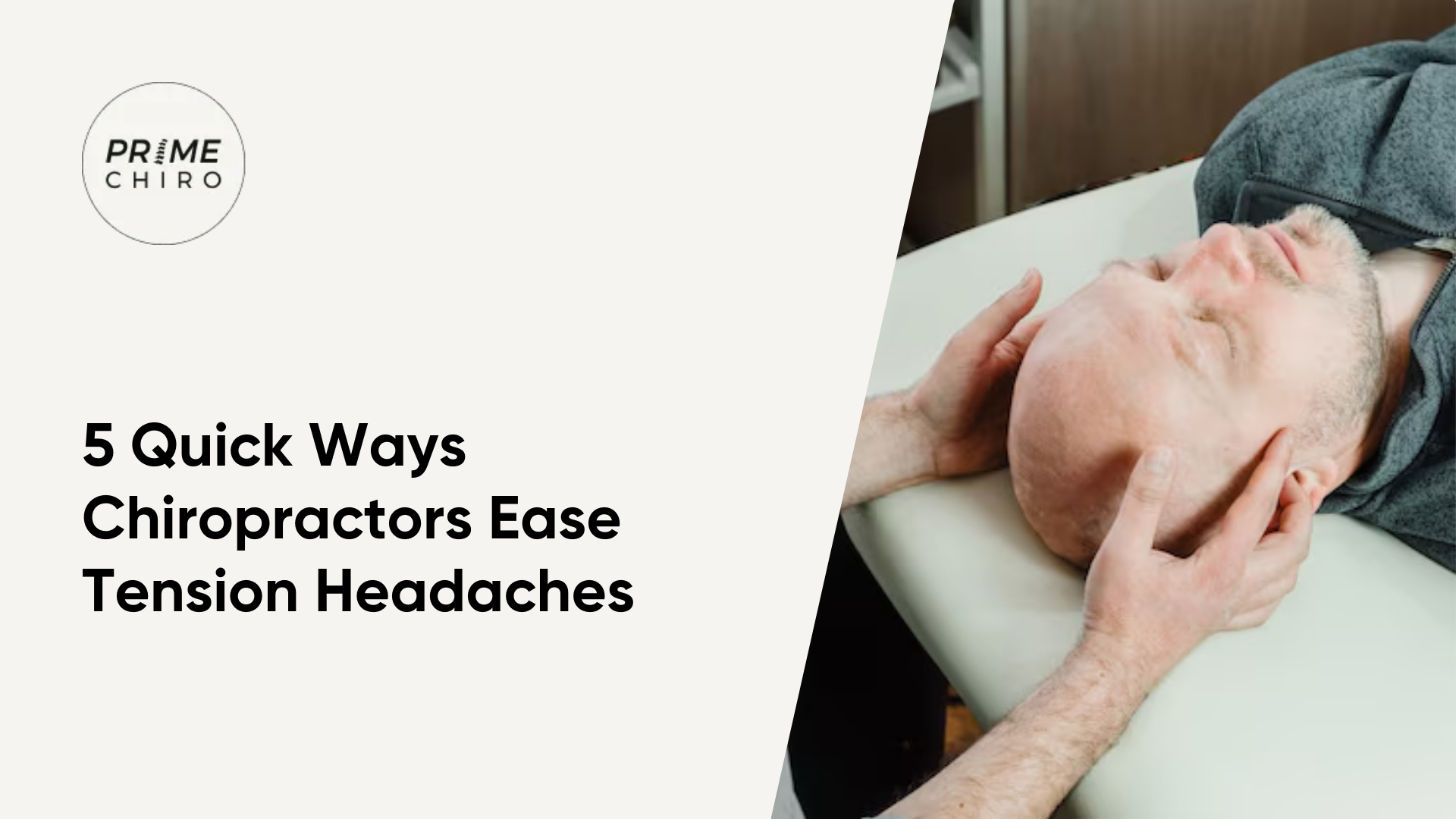
Tension headaches affect millions of people daily, disrupting work productivity and quality of life. While over-the-counter medications offer temporary relief, many individuals seek longer-lasting, drug-free solutions for their chronic head pain. Chiropractors have developed effective techniques that address not just the symptoms, but the underlying causes of tension headaches. From precise spinal adjustments to targeted muscle therapy, these professional interventions provide both immediate comfort and lasting results. Understanding these five proven methods can transform how you approach headache management and potentially eliminate the need for conventional painkillers.
When tension headaches strike, spinal manipulative therapy performed by qualified chiropractors offers immediate therapeutic intervention through precise vertebral adjustments. Through targeted spinal manipulation of the neck and upper back regions, practitioners effectively address vertebral subluxations that contribute to nerve pressure and muscle tension.
Clinical evidence supports the efficacy of chiropractic care in providing immediate relief from tension headaches. By restoring proper spinal alignment, these adjustments facilitate improved cerebral blood flow and reduce headache intensity. The non-pharmacological approach of spinal adjustments presents fewer adverse effects compared to conventional medication-based treatments. Additionally, regular assessments during ongoing chiropractic care can help tailor treatment plans to individual needs, enhancing overall effectiveness.
Regular therapeutic sessions can significantly diminish both the frequency and severity of tension headaches over time. This evidence-based intervention addresses the underlying biomechanical dysfunction while promoting optimal neurological function through precise spinal manipulation techniques.
Complementing spinal manipulative therapy, targeted neck muscle treatment forms a vital component of comprehensive chiropractic care for tension headaches. Through evidence-based soft tissue therapy techniques, including myofascial release and trigger point therapy, practitioners effectively address muscle tightness in the neck and upper back regions.
Clinical studies demonstrate that targeted therapy of specific muscle groups significantly reduces tenderness and tension in cervical tissues. By identifying and treating distinct trigger points that refer pain to the head, chiropractors utilize precise manual techniques to release chronic muscle tension. This therapeutic approach enhances blood flow and nutrient delivery to affected areas, directly alleviating headache symptoms. When combined with spinal adjustments, these specialized soft tissue interventions provide a comprehensive treatment protocol that addresses both muscular and neurological components of tension headaches. Additionally, Instrument Assisted Soft Tissue Mobilization is increasingly used to break up scar tissue and adhesions, further improving mobility and reducing headache symptoms.
A significant component of chiropractic intervention for tension headaches involves implementing evidence-based posture correction techniques. Through precise spinal adjustments, chiropractors address misalignments that contribute to poor neck and shoulder positioning, ultimately reducing muscle tension and nerve compression.
The therapeutic approach incorporates targeted exercises and stretches designed to strengthen postural muscles and enhance spinal stability. Practitioners provide individualized ergonomic recommendations for workplace modifications, ensuring optimal positioning during daily activities. These adjustments help patients maintain good posture throughout their daily routines, minimizing strain on the musculoskeletal system.
Regular chiropractic care, combined with consistent application of posture correction techniques, creates a comprehensive treatment strategy. This systematic approach not only alleviates current symptoms but also prevents future tension headaches through sustained postural improvements. Additionally, chiropractic care focuses on pain relief and improved mobility, enhancing overall well-being.
Through precise manipulation of myofascial trigger points, chiropractors employ specialized pressure techniques to address hyperirritable spots within skeletal muscle tissue that contribute to tension headaches.
Using manual palpation to identify taut bands of muscle tissue, practitioners apply targeted pressure to specific anatomical areas in the neck, shoulders, and upper back. The therapeutic intervention, known as trigger point therapy, facilitates the release of muscular tension through sustained compression of these hyperirritable spots. Clinical studies demonstrate the efficacy of trigger point release in reducing both the intensity and frequency of tension-type headaches. During treatment, chiropractors may utilize various tools and manual techniques, including finger pressure, knuckle compression, or specialized instruments. This methodical approach promotes improved circulation and muscle relaxation, ultimately alleviating headache symptoms through the normalization of affected tissue. Additionally, incorporating injury prevention strategies can further enhance the effectiveness of chiropractic care in managing tension headaches.
Movement-based interventions prescribed by chiropractors play a vital role in mitigating stress-induced tension headaches by facilitating muscular relaxation and enhancing circulatory function. Strategic implementation of regular exercise protocols, including mind-body practices such as Yoga and Tai Chi, demonstrates efficacy in reducing headache frequency while optimizing postural alignment.
Chiropractic adjustments, combined with targeted physical activity, create a comprehensive approach to tension management. These therapeutic interventions focus on mobilizing the neck and shoulders through stress-relieving movements, promoting optimal spinal mechanics. Practitioners often recommend self-massage techniques utilizing therapy balls or foam rollers to address myofascial trigger points. This integrated movement strategy encompasses both structured exercise routines and gentle stretching protocols, establishing a foundation for sustained headache prevention while addressing underlying biomechanical dysfunctions that contribute to tension accumulation. Additionally, chiropractic adjustment techniques can significantly enhance the effectiveness of these movement strategies by improving spinal alignment and reducing muscle tension.
Chiropractic interventions for tension headaches demonstrate significant efficacy through multimodal approaches. Evidence supports the implementation of spinal manipulative therapy, myofascial release, postural rehabilitation, trigger point deactivation, and kinetic stress reduction protocols. These evidence-based methodologies, when applied systematically, facilitate neuromuscular restoration, enhance cervical biomechanics, and optimize cranial blood flow. Clinical outcomes indicate reduced headache frequency and intensity when these therapeutic modalities are utilized in conjunction with proper patient compliance.